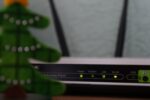In an increasingly interconnected world, home network security has become a critical concern. With the increasing number of connected devices, from smartphones and laptops to smart home appliances, it is crucial to implement effective measures to protect your home network against potential cyber threats. Here’s a complete guide on how to optimize security on your home network with tips and best practices to help you keep your data and devices protected.
Discover all the products in our online store.
Regularly update your devices and router
Keep all your devices, including your router, up to date with the latest security and firmware patches. Regular updates can fix known vulnerabilities and strengthen the security of your devices against potential cyber threats.
Set strong passwords and change default passwords
Use strong, unique passwords for your Wi-Fi network and change the default passwords on your devices and router. Avoid using obvious or easy-to-guess passwords, such as dates of birth or simple combinations, and consider using an administrator password to protect your router settings.
Set up a secure Wi-Fi network
Use strong encryption, such as WPA2 or WPA3, to secure your Wi-Fi network and protect it from unauthorized access. Additionally, hide your network name (SSID) to prevent it from being visible to unauthorized users and enable intrusion detection to monitor activity on your network and detect potential threats.
Implement a firewall and antivirus software
Use a network firewall to control data traffic and block potential cyber attacks. Additionally, install and regularly update reliable antivirus software on all your devices to protect them against malware, viruses, and other online threats.
Use a virtual private network (VPN)

Consider using a virtual private network (VPN) to encrypt your Internet traffic and protect your online privacy. A VPN can hide your IP address and ensure a secure connection, especially when accessing the Internet from public or unsecured Wi-Fi networks.
Monitor access to your network
Control the devices that have access to your home network and limit access from unknown devices. Use parental control features and security settings on your devices to manage and monitor your family’s online activity, especially for children.
Back up your data regularly
Make regular backups of your important data on external devices or in the cloud. Backups allow you to restore your data in the event of loss or damage, ensuring you don’t lose vital information in the event of a cyber attack or device failure.
Conclusion
Optimizing security on your home network is crucial to protecting your data and devices against potential online threats. By following these best practices and security tips, you can strengthen the protection of your home network and ensure a safe online experience for you and your family. Keep your devices up-to-date, use strong passwords and reliable security tools, and practice active surveillance to protect your home network from potential cyber risks and threats.








